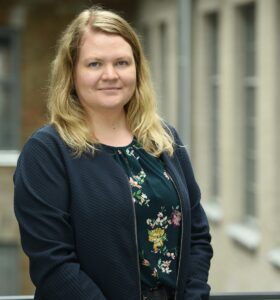12.1.2024
Doctoral thesis on the dissolution of bioactive glass in environments mimicking the human body

M.Sc. Minna Siekkinen’s doctoral thesis in inorganic chemistry will be put forth for public defence at the Faculty of Science and Engineering at Åbo Akademi University.
The thesis is entitled The impact of dissolution products and solution pH on in vitro behaviour of the bioactive glasses 45S5 and S53P4.
The public defence of the doctoral thesis takes place on 19 January 2024 at 1PM in auditorium Argentum, Aurum, Henrikinkatu 2, Turku. You can also follow the defence of the doctoral thesis online. Assistant Professor Dana Rohanová, University of Chemistry and Technology, Prague, Czech Republic, will serve as opponent and Professor Leena Hupa, Åbo Akademi University, as custos.
Summary
This research studies the dissolution of bioactive glass in environments mimicking the human body. Bioactive glass is clinically used as a filler material in bone cavities. At Åbo Akademi University, the research is focused on a dynamic environment mimicking the circulating solution inside the human body.
The research aimed to understand how the dissolution of ions impacts the continued dissolution of bioactive glass. In addition, the impact of solution pH and solution flow rate on the reactions was also studied. Most of the research was made in a dynamic environment with reactors coupled in series, where the first reactor was assumed to mimic the outer surface of a porous implant and the following reactor the internal parts.
The research showed that bioactive glass in a physiological pH range dissolves differently over a particle bed, where particles inside the bed react slower than on the surface. This was assumed to be because the dissolved ions from the first reactor inhibited the dissolution in the following reactor but contributed to the reaction layers, which inhibited more dissolution. In contrast, bioactive glass dissolves more similarly over the particle bed in an acidic environment. This means that at a lower local pH, e.g., at an infection or degradation of a biopolymer, bioactive glass particles inside the particle bed would react similarly to the implant’s surface and be less impacted by the dissolved ions from the surface.
A lower flow rate resulted in a lower dissolution of bioactive glass. However, a lower flow rate results in higher local ion concentrations, which is of importance due to too high ion concentrations may lead to cell toxicity.
The research gave a better understanding of the dissolution of bioactive glass in laboratory environments mimicking the human body. The results can be used to develop new glass compositions for specific applications and new test parameters that mimic the human body better.
Minna Siekkinen was born in 1991 in Nykarleby, Finland. She can be reached by phone 050 465 6520 or email minna.siekkinen@abo.fi.
The doctoral thesis can be read online through the Doria publication archive.
Click here for a press photo of the doctoral student.
Instructions on how to follow the doctoral defence remotely
To follow the defence, you need the Zoom software or the Google Chrome browser. You do not need to create a Zoom account to follow the defence. If you install the application, you participate by clicking on the meeting link, after which you should allow the link to open in the Zoom app.
